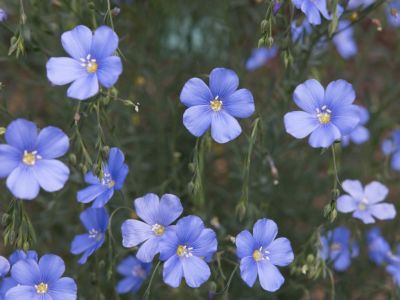The common flax plant, Linum usitatissimum, may be grown as a commercial crop in some areas. Flax is grown for the oil of its seeds, linseed oil, a protein source for livestock. Some commercial growers plant legumes as companions of the flax flower.
How to Grow Flax
Continued bloom of the flax flower is assured if conditions are right, due to self-seeding of this plant. A single planting in early spring provides an abundance of flax flowers in late spring and summer, but re-seeding by this plant assures a continued mass of growing flax in the meadow or natural area. Soil for planting flax should be poor and barren. Sand, clay, and rocky soil all contribute to best growth of this plant. Soil that is too rich or organic may cause the plant to flop or die altogether as it is overtaken by other plantings that like rich, organic soil. Watering the growing flax plant is usually not necessary, as the plant prefers dry soil. Tips on how to grow flax should contain a recommendation that the location for planting flax be chosen carefully. It is probably not appropriate for a formal or worked up garden, as the soil will be too rich and most other plants in that setting will need water. After planting, flax plant care is simple, as little maintenance is needed when growing flax. Tiny seeds germinate within a month of planting and produce a wealth of growing flax. The flax flower lasts only a day, but there seems to always be another to take its place. If you would like to grow flax, consider seeding a meadow or open area with sunny spots. Seed sparingly until you see how the flax performs, as it has been known to escape cultivation and is considered a weed by some.
